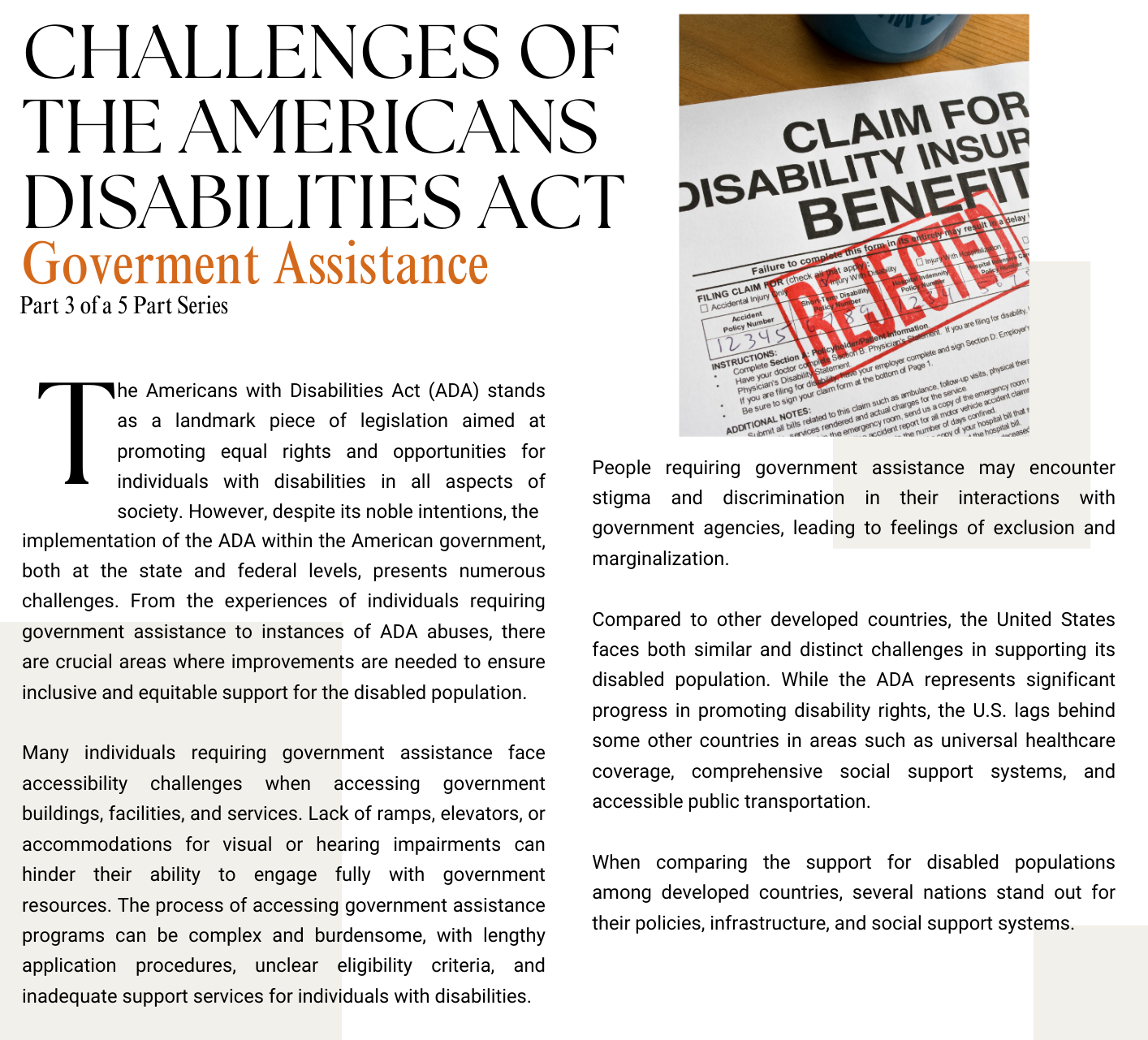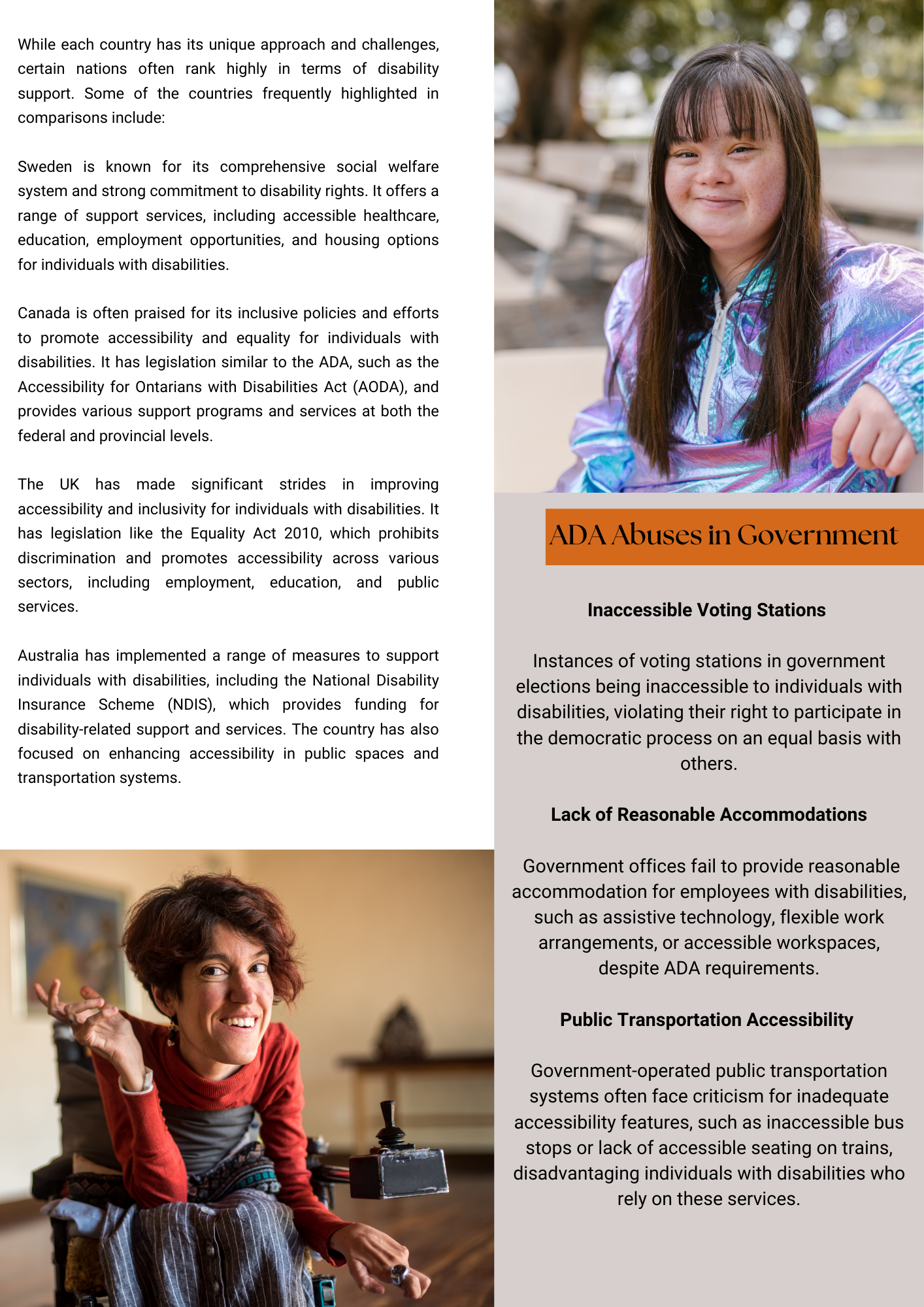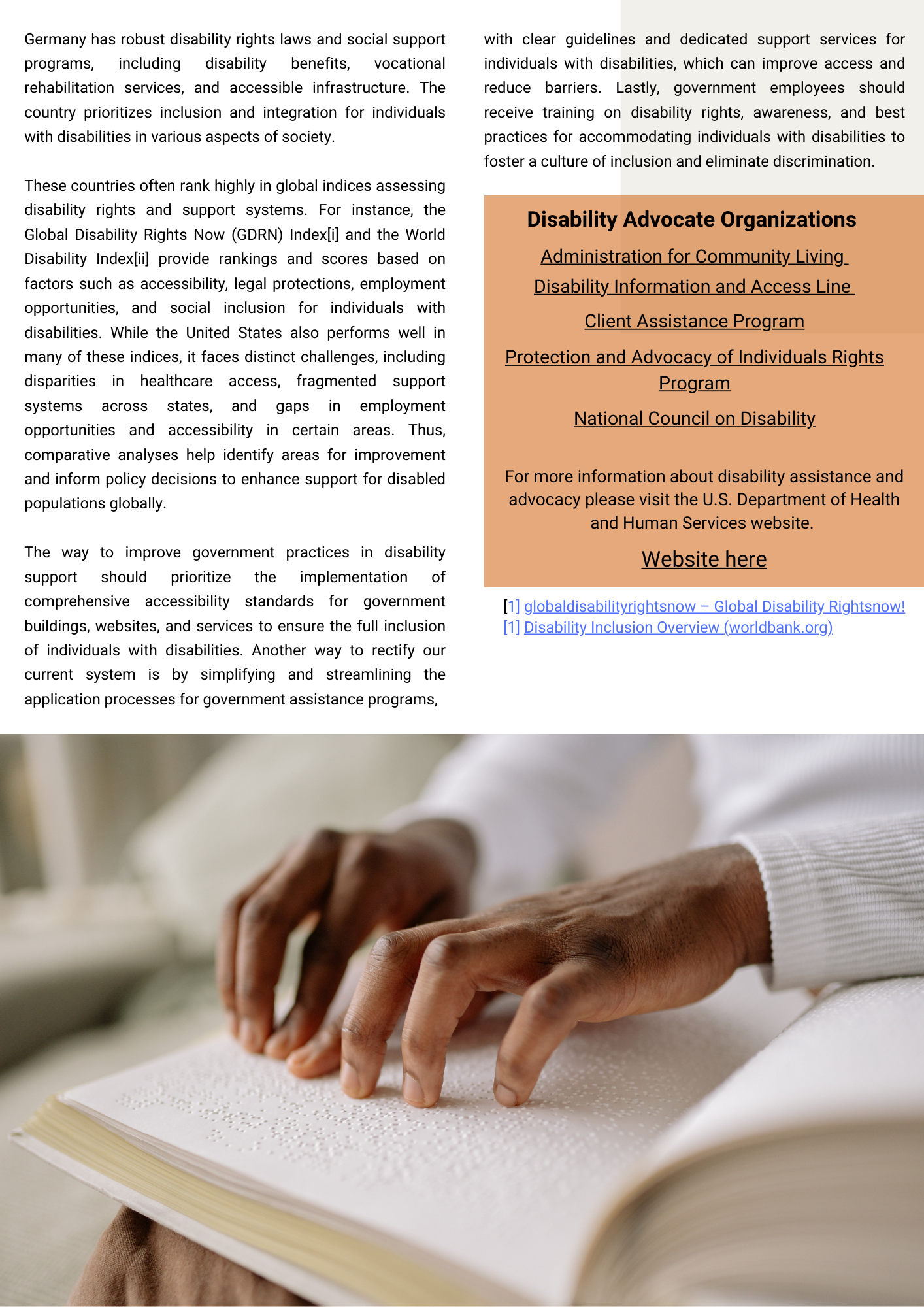ADA Series: Government Assistance




Government Assistance ADA Violations and Mediation
When it comes to ADA violations and civil mediation, the outcomes can vary depending on the specific circumstances of the case, the willingness of the parties to negotiate, and the strength of the evidence presented. In civil mediation, the goal is typically to reach a mutually acceptable resolution without going to trial.
If a plaintiff believes they have a valid claim for an ADA violation and chooses to pursue mediation, they need to prepare thoroughly. Plaintiffs should have a clear understanding of the ADA and how it applies to their situation. This includes knowing their rights under the law and the obligations of the defendant. Evidence to support their claims, such as photographs, witness statements, medical records (if applicable), and any communications related to the alleged violation should be organized and ready for mediation.
Before entering mediation, the plaintiff should think about what they hope to achieve. This could include modifications to facilities or policies, compensation for damages, or other remedies. Depending on the complexity of the case, the plaintiff may benefit from having legal representation during mediation. An attorney can provide guidance, negotiate on their behalf, and ensure their rights are protected.
While the plaintiff should have clear goals, they should also be open to compromise during mediation. The goal is to reach a resolution that is acceptable to both parties, which may require some flexibility. Prepare for negotiation by being prepared to articulate their position clearly and persuasively during mediation. This includes being able to explain how the ADA was violated and the impact it has had on them.
In terms of outcomes, if mediation is successful, the parties may reach a settlement agreement that resolves the ADA violation without the need for further legal action. This could involve the defendant agreeing to make changes to their facilities or policies, providing compensation to the plaintiff, or taking other corrective actions.
However, if mediation is unsuccessful, the case may proceed to litigation, where a judge or jury will make a final decision. It's important for plaintiffs to weigh the potential risks and benefits of mediation carefully and to consult with legal counsel if needed.
Addressing the challenges of the Americans with Disabilities Act in government requires concerted efforts to enhance accessibility, eliminate discrimination, and improve support services for individuals with disabilities. By prioritizing inclusive policies, enhancing awareness, and training, and fostering collaboration with disability advocacy groups, governments can work towards creating a more equitable and accessible society for all parties involved.